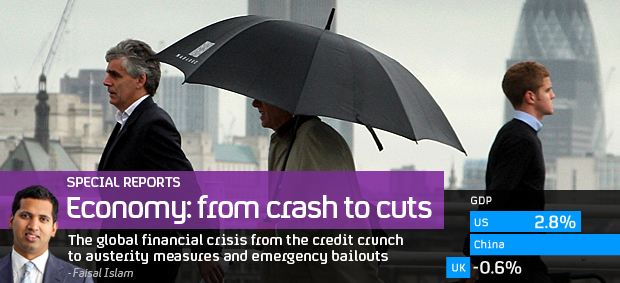UK unemployment rises by 38,000
The number of unemployed people in the UK has risen by 38,000. The figure has surprised many economists who were expecting a drop in the number of jobseekers.
The country’s jobless rate stood at 2.49 million or 7.9 per cent between April and June, the Office for National Statistics said, after the total number of unemployed increased by 38,000.
Economists had expected a fall in unemployment of around 10,000.
Within the figures, the number of unemployed women hit levels not seen in more than 23 years.
Elsewhere, the number of people claiming jobseeker’s allowance showed the biggest monthly rise in more than two years, increasing by 37,100 to 1.56 million people.
The unemployment figures come as George Osborne rolls out tough public sector spending cuts – which include hundreds of thousands of job losses.
The Chancellor is banking on a healthy private sector to pick up the slack in the economy but recent figures showing sluggish 0.2 per cent growth in the second quarter have raised fears over the strength of the recovery.
Elsewhere, large companies, including Britain’s biggest banks, have announced plans to cut tens of thousands of jobs across the UK over the coming year.
The number of people unemployed for up to six months increased by 66,000 over the quarter to reach 1.23 million – the largest quarterly increase in two years.
The number of unemployed men increased by 18,000 to 1.45 million, while the jobless women increased by 21,000 to 1.05 million – the highest figure since May 1988.
‘Major blow’
Charities are calling for the Government to do more to reduce unemployment.
Save the Children’s Head of UK Policy Sally Copley said: “The latest unemployment figures deal a major blow to efforts to tackle child poverty.
“There is a strong link between unemployment and child poverty and we know it’s becoming increasingly difficult for many parents struggling to move into work and cope with rising living costs to build a decent life for themselves and their children.
“The Government needs to do much more to make sure decent jobs are available to parents and to boost the incomes of the poorest families.
“That means pushing employers to adopt the living wage; supporting parents with childcare costs so it’s easier for them to move into work; and it means compensating families for the cuts and rising living costs through Child Tax Credit increases.”
